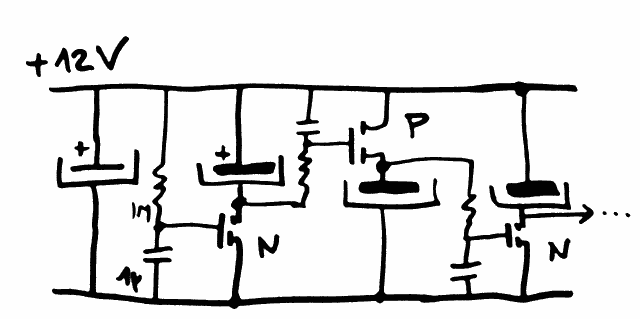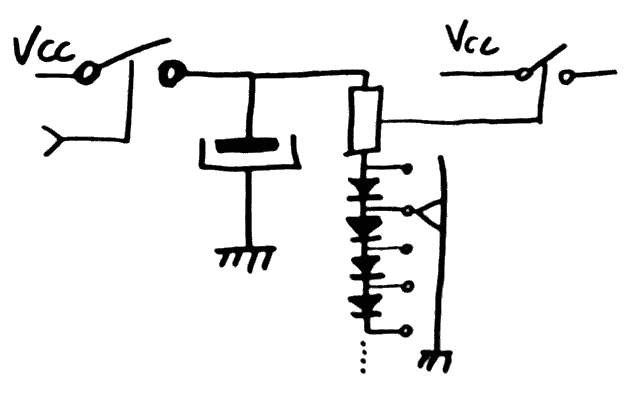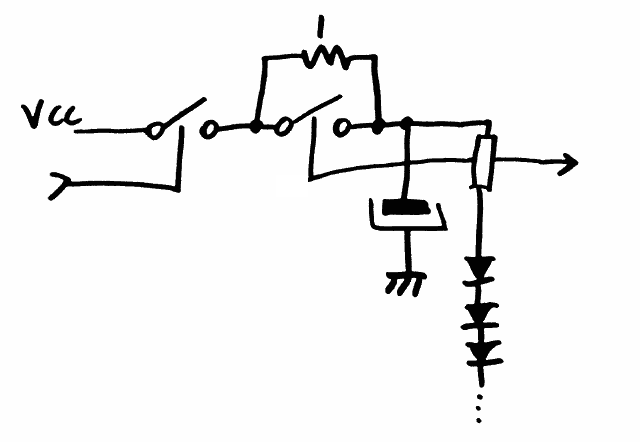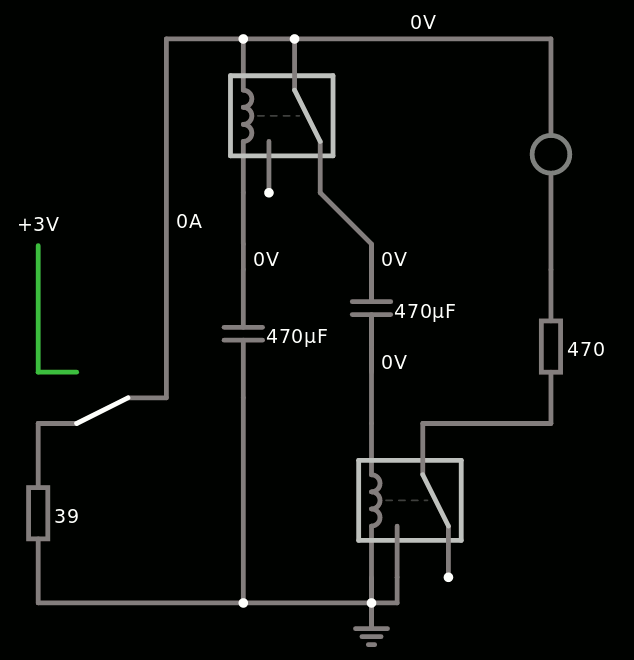This beast is going to draw "a lot of power" and turning it on might create some significant inrush current...
I should automate the startup sequence : turn the power on for each section, one by one, then toggle all the CCPBRL control signals to set each relay to a known state.
Yesterday I figured something out with MOSFETs:

This method is nice and uses the "smooth" linear mode of the MOSFETs to prevent spikes (before going to "ultralow resistance" mode) but I have to stick to relays. The RES15 can't handle much current so I'll use a different type, but the coils consume significant current and RC delays are hard to make without LARGE capacitors. That's one conclusion from the first experiment with the Relay ring oscillator of #SPDT16: 16-bits arithmetic unit with relays.
So the problem is "how to sense the voltage" and ensure it has reached a high enough level before switching the next section. PBRL doesn't help here. But writing about it made me imagine a different system... I was simply looking at it from the wrong perspective.
So let's imagine I power several sections, for example 4 bitslices each. That's 4 high-current relays.
Let's measure the Von voltage of the power relay then add diodes in series to make the desired trigger voltage :-)

This limits the inrush current to one section, but can the current be reduced as well ?
Using a DPDT relay makes it possible, the following circuit lets the current flow through a current-limiting resistor until the voltage reaches a defined point, after which the resistor is shorted.

The value of the resistor is important. I have chosen 1 Ohm to limit the current to 1A/V. I have not shown the rest of the circuit, made of plenty of 40mA sinks... if the resistor is too high, the voltage may not reach 2Vcc/3 and trigger the charge of the next section.
For the capacitors, I have "enough" 22000µF/16V and 10000µF/35V.
.
2022/02/10 : I found a way better system ...

 Yann Guidon / YGDES
Yann Guidon / YGDES
Discussions
Become a Hackaday.io Member
Create an account to leave a comment. Already have an account? Log In.